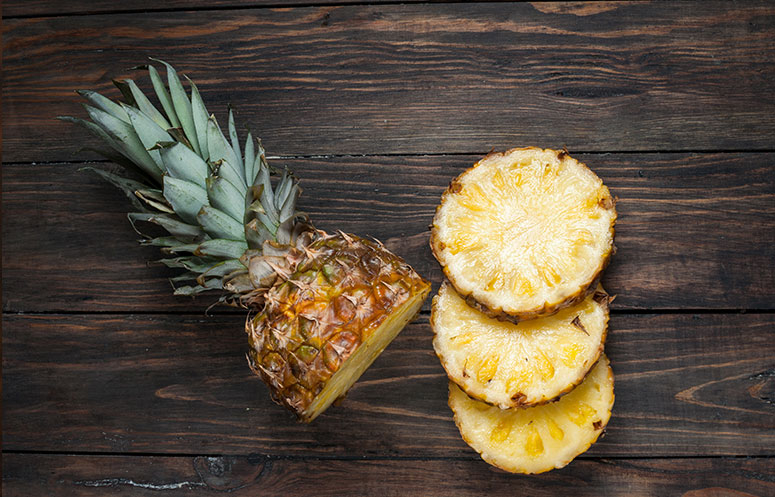Pineapple
The pineapple (Ananas comosus) is a tropical plant with edible fruit; it is the most economically significant plant in the family Bromeliaceae. The pineapple is a native of South America and has been grown there for many years. The pineapple became a prominent cultural symbol of luxury after it was introduced to Europe in the 17th century. Pineapple has been grown for commercial purposes on numerous tropical plantations and in greenhouses since the 1820s.
The height of the pineapple, a perennial herbaceous plant, ranges from 1 to 1.2 meters. It has a 20–25 cm long, short, and thick stem, with meristematic tissues making up the leaf-forming tip. Depending on where they are located inside the plant, the leaves might differ in length and shape. Pineapples have yellow or white pulp, are fleshy, aromatic, juicy, and sweet. In the fruit, there is a fibrous axis that extends from the crown to the pedicle. It has a low-calorie count, making them excellent for weight-loss programs. People with gastritis or dyspepsia can benefit from it because it aids in digestion. It is a fruit that regulates digestive activities and has a mild laxative effect. This fruit stimulates pancreatic activity. It has a lot of manganese, a mineral that is rarely found in other fruits.












